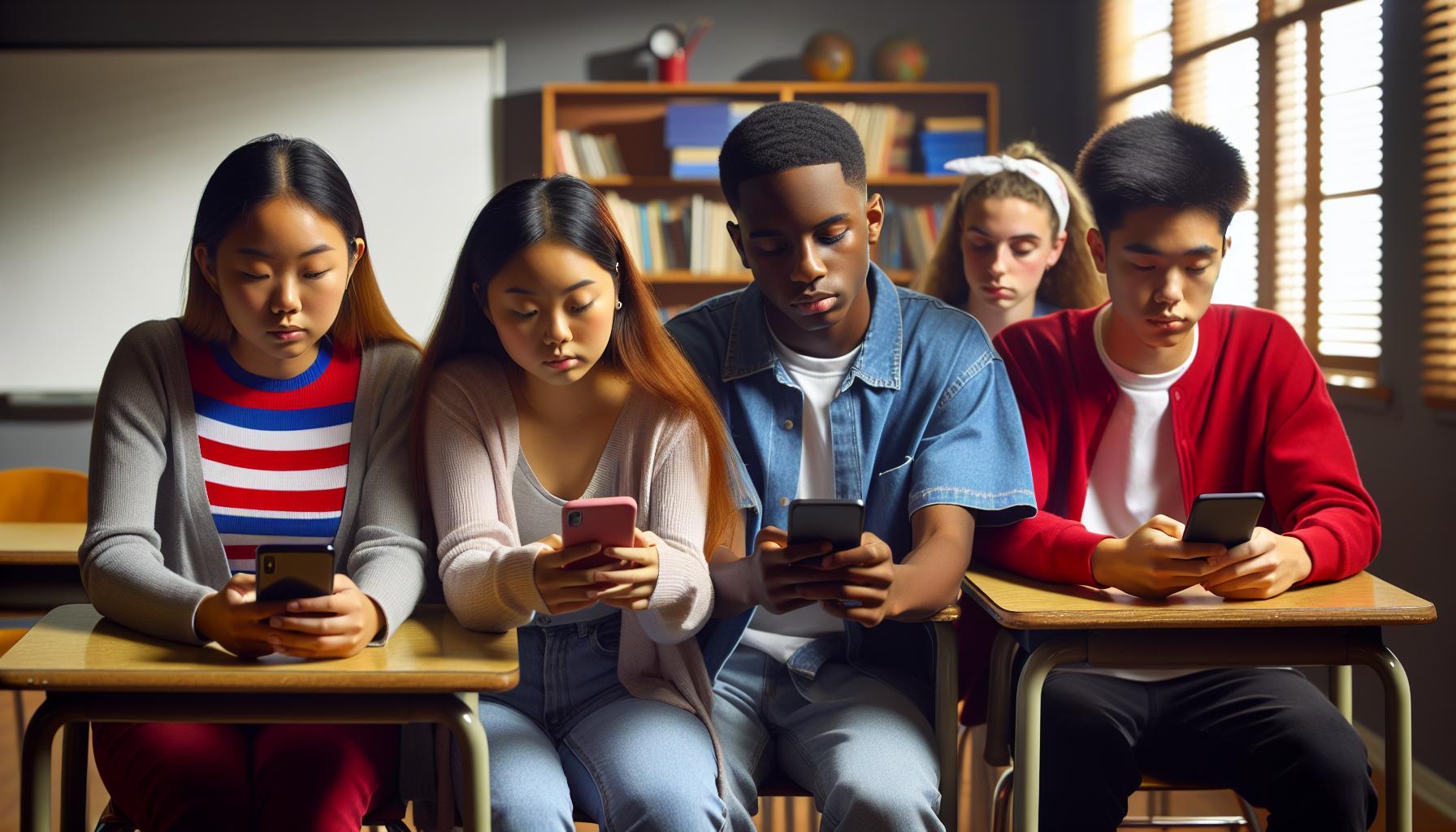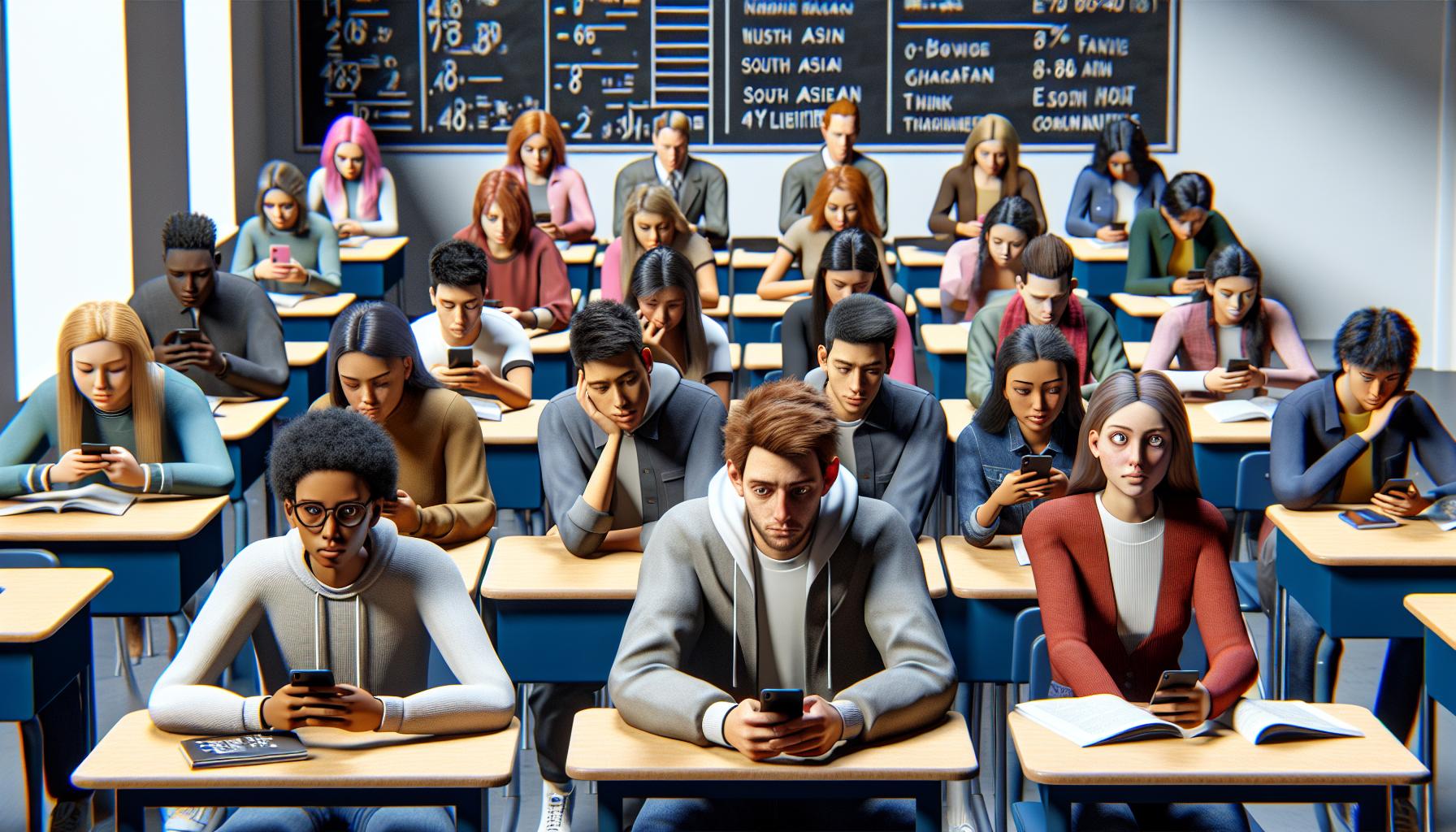Key Takeaways
- Widespread Use: Approximately 90% of teens engage with social media, spending an average of three hours daily, which affects their communication skills and educational experiences.
- Mental Health Risks: Excessive social media use is linked to increased anxiety and depression, with many students feeling overwhelmed by peer comparisons and the need for validation.
- Cyberbullying Exposure: About 36% of students experience cyberbullying, leading to serious mental health issues, highlighting the importance of awareness and intervention.
- Academic Consequences: Student distraction from social media can hinder academic performance, with 30% reporting lower GPAs due to excessive engagement on these platforms.
- Privacy Concerns: Many students are unaware of their privacy settings, putting them at risk for data misuse, identity theft, and unwanted attention.
- Social Isolation: Despite being digitally connected, students often feel lonely; promoting in-person relationships can help combat feelings of isolation caused by social media.
Social media has transformed the way students connect and communicate, but it comes with a hidden cost. While platforms like Instagram and Snapchat offer opportunities for creativity and social interaction, they also expose young users to a range of dangers that can impact their mental and emotional well-being.
Cyberbullying, privacy concerns, and unrealistic comparisons are just a few of the issues students face in the digital landscape. As they navigate their formative years, understanding these risks becomes crucial for fostering a safe online environment. Awareness and education about the dangers of social media can empower students to make informed choices and protect themselves from potential harm.
Dangers of Social Media For Students
Social media usage among students occurs at significant rates, with approximately 90% of teens engaging in platforms like Instagram, Snapchat, and TikTok. This consistent involvement shapes their social interactions and influences their educational experiences.
Users typically spend around three hours daily on social media, impacting their time management and study habits. As students connect with peers, they enhance their communication skills and foster relationships. However, these platforms also create challenges.
Students frequently encounter risks such as cyberbullying, with 36% of them reporting experiences of being bullied online. Privacy violations arise as students share personal information, leading to potential identity theft or data misuse. Additionally, exposure to curated online content contributes to unrealistic comparisons, affecting self-esteem and mental health.
Awareness of these issues is crucial. Educational institutions can implement workshops and programs that address the risks of social media and promote safe online practices. By understanding the dangers, students can navigate their digital environments more effectively and make informed decisions regarding their social media usage.
Psychological Impacts

Social media significantly affects students’ mental health. The exposure to curated content can lead to adverse psychological outcomes, including heightened anxiety and depression.
Anxiety and Depression
Social media use links closely to increased anxiety and depression among students. A study from the American Psychological Association states that teens who spend more than three hours daily on social media may experience mental distress. They often face pressures from peer comparisons, cyberbullying, and negative feedback on posts. About 40% of teens report feeling overwhelmed by the constant need for validation. This pressure can contribute to feelings of loneliness and inadequacy, exacerbating existing mental health challenges.
Addiction and Dependency
Social media platforms cultivate addictive behaviors among students. The instant gratification from likes and comments fosters a cycle of dependency, where individuals constantly seek validation online. A report from Common Sense Media notes that 50% of students feel addicted to their phones. This dependency can disrupt academic performance and hinder real-life relationships. Students may prioritize online interactions over in-person connections, leading to social isolation and a decline in face-to-face communication skills.
Academic Consequences

Social media’s pervasive presence significantly impacts students’ academic lives, resulting in various negative outcomes. The following subsections outline the primary academic concerns related to social media use.
Distraction and Procrastination
Distraction from social media affects students’ focus on academic tasks. Notifications and messages often interrupt study sessions, leading to fragmented attention. Nearly 65% of students admit to procrastinating on schoolwork due to social media distractions. The instant gratification from likes and comments can create a habit of checking platforms frequently, which reduces productivity. Delayed assignments and poor study habits become common when social media takes precedence over learning tasks.
Impact on Academic Performance
The influence of social media use directly correlates with students’ academic performance. Studies indicate that students who spend over three hours daily on social media encounter lower grades. Approximately 30% of students report a noticeable decline in their GPA due to excessive social media engagement. The reliance on digital communication can diminish critical thinking and problem-solving skills essential for academic success. Students focusing on social media may struggle to complete homework or retain information effectively.
Social Effects

Social media’s influence on students extends beyond academic performance, significantly impacting their social well-being. Two critical issues include cyberbullying and social isolation, both of which can adversely affect mental health.
Cyberbullying
Cyberbullying presents a pervasive threat to students’ safety and well-being. Approximately 36% of students report experiencing cyberbullying, often through platforms like Instagram, Snapchat, and TikTok. This form of harassment can occur anonymously, making it easier for aggressors to intimidate victims without facing direct consequences. The effects of cyberbullying include increased anxiety, depression, and a decline in self-esteem. Studies show that victims are more likely to engage in risky behaviors or develop mental health issues, underscoring the urgent need for awareness and intervention strategies in educational environments.
Social Isolation
Social media paradoxically fosters connections while simultaneously contributing to feelings of social isolation. Many students, despite being digitally connected, report a sense of loneliness. Spending an average of three hours daily on social media can diminish meaningful face-to-face interactions, leading to isolation. Research indicates that students who prioritize online interactions over real-life relationships experience increased feelings of alienation. This isolation can exacerbate mental health issues, making it essential to promote balance between online and offline social experiences. Encouraging students to cultivate in-person connections can help mitigate the negative effects of social media on their social health.
Privacy Concerns
Social media poses significant privacy concerns for students, exposing their personal information and data to various risks. Understanding these issues is crucial for ensuring their online safety.
Data Privacy Risks
Data privacy risks arise when students share personal information on social media platforms. Many platforms collect user data for advertising, which can lead to unauthorized access or misuse. A report by the Electronic Frontier Foundation indicates that 70% of popular social media apps collect location data, potentially exposing students to real-world dangers. Furthermore, breaches in data security can result in the leaking of sensitive information, creating opportunities for identity theft. Approximately 64% of students lack awareness regarding their privacy settings, increasing the likelihood of their data being accessed by third parties without consent.
Sharing Personal Information
Sharing personal information online poses another critical risk. When students post content, such as their location, school details, or contact information, they make themselves vulnerable to unwanted attention. Research shows that 40% of teens have shared personal information with strangers online, leading to potential harassment or cyberbullying. The risk multiplies when students fail to recognize the permanence of their digital footprints. Deleting a post doesn’t guarantee its removal from the internet; screenshots can capture shared content. Educating students about the implications of sharing personal information can significantly reduce their exposure to privacy violations and related dangers.
Dangers of Social Media For Students
The dangers of social media for students are significant and multifaceted. While it can enhance creativity and foster connections, the negative impacts on mental health and academic performance cannot be overlooked. Students face risks like cyberbullying and privacy violations that can lead to lasting emotional distress.
Promoting awareness and education about these issues is crucial. By understanding the potential pitfalls of social media, students can make informed choices that protect their well-being. Balancing online engagement with real-life interactions is essential for maintaining healthy relationships and academic success. With the right guidance, students can navigate the digital landscape safely and effectively.